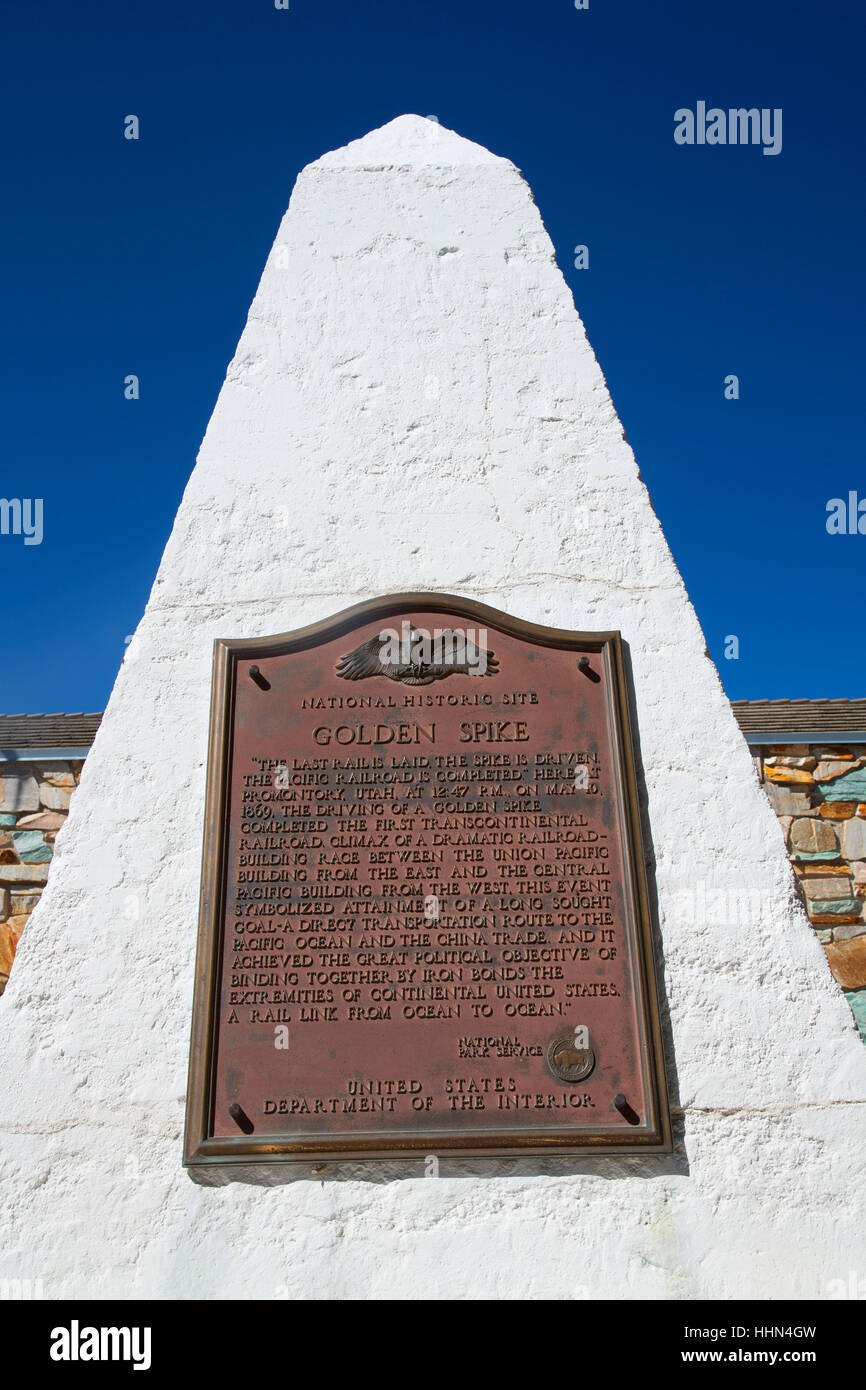
From the National Monument you will follow a well grated gravel road about another 10 miles to the Spiral Jetty. Follow the signs until you get to the National Monument. Pass Corinne and head toward Promontory Point and the Golden Spike National Monument. At Dinosaur National Monument in northeastern Utah, however, they do share one thing. To get to the Spiral Jetty take exit 365 from I-15 toward Corinne. From Memorial Day to Labor Day a dedicated team of volunteers performs the reenactment of the driving of the last spike ceremony. Check out this itinerary to visit Golden Spike National Monument and the Spiral Jetty. 119, which operate daily from May 1 through mid-October. The monument reaches 59 feet into the air and weighs 243,200 pounds. Golden Spike is home to the replica steam locomotives Jupiter and No.

It took 5 days to build the base and 5 days to build the spike. The Monument was constructed by 14 men in 10 days and completed on Apat a cost of $3,500. President Franklin Roosevelt opened the celebration by using a telegraph key set up in the White House for him to send the message to start the celebration.Īt the March 1939 Council Bluffs City Council Meeting, City engineer Jack Boyne suggested the monument and design. The latest art piece, Golden Spike Monument, is an inspiring 43 tall golden monument that invites spectators to reflect on the achievement of building the transcontinental railroad and to learn the untold stories of the diverse railroad workers who made it possible.
#Golden spike monument movie#
Union Pacific, the Cities of Omaha and Council Bluffs and Paramount Studios held Golden Spike Days in the area to celebrate the premier opening of the movie and an end of the depression. Golden Spike was designated as a national historic site in nonfederal ownership on April 2, 1957, and. This event sparked unforetold consequences still reflected in our great nation today. DeMille and Paramount Pictures produced the story of building the railroad in the movie "Union Pacific". A pyramidal monument marks the spot where the golden (last) spike was driven on May 10, 1869, linking the Central Pacific and Union Pacific railroads. The actual Golden Spike is not here, but instead housed at Stanford University in California (although you can see various replicas). In 1869, the Union Pacific and Central Pacific railroad companies joined 1,776 miles of rail at what's now known as Golden Spike National Historical Park. For the 70th anniversary of the driving of the golden spike in Promontory Point, Utah, movie producer Cecil B.

In 1877, a transfer station and passenger station was built on the grounds at Milepost 0.0 where the Monument sits now. The Golden Spike Monument (S 21st Street & 9th Avenue) sits on Milepost 0.0 the eastern terminus of the Union Pacific Railroad. Digital archives of the extensive Bernice Gibbs Anderson Collection of the Golden Spike National Historical Park, National Park Service, documenting the.


 0 kommentar(er)
0 kommentar(er)
